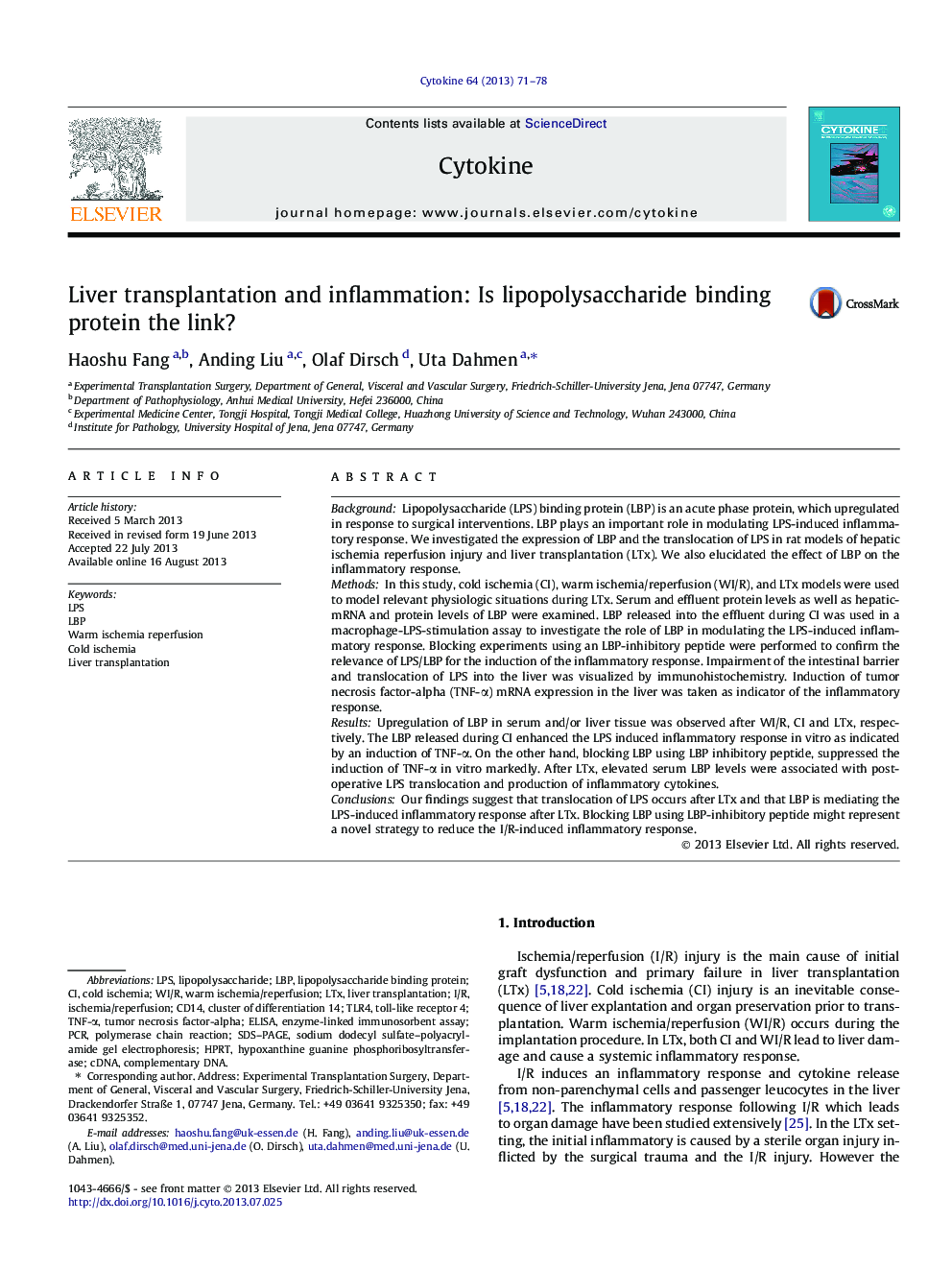| کد مقاله | کد نشریه | سال انتشار | مقاله انگلیسی | نسخه تمام متن |
|---|---|---|---|---|
| 5897723 | 1155276 | 2013 | 8 صفحه PDF | دانلود رایگان |
- Upregulation of LBP in serum and liver tissue was observed after WI/R, CI and LTx.
- The LBP released during CI enhanced the LPS induced inflammatory.
- After LTx, elevated serum LBP levels were associated with post-operative LPS translocation.
- Our results suggest that LBP is mediating the LPS-induced inflammatory response after LTx.
BackgroundLipopolysaccharide (LPS) binding protein (LBP) is an acute phase protein, which upregulated in response to surgical interventions. LBP plays an important role in modulating LPS-induced inflammatory response. We investigated the expression of LBP and the translocation of LPS in rat models of hepatic ischemia reperfusion injury and liver transplantation (LTx). We also elucidated the effect of LBP on the inflammatory response.MethodsIn this study, cold ischemia (CI), warm ischemia/reperfusion (WI/R), and LTx models were used to model relevant physiologic situations during LTx. Serum and effluent protein levels as well as hepatic-mRNA and protein levels of LBP were examined. LBP released into the effluent during CI was used in a macrophage-LPS-stimulation assay to investigate the role of LBP in modulating the LPS-induced inflammatory response. Blocking experiments using an LBP-inhibitory peptide were performed to confirm the relevance of LPS/LBP for the induction of the inflammatory response. Impairment of the intestinal barrier and translocation of LPS into the liver was visualized by immunohistochemistry. Induction of tumor necrosis factor-alpha (TNF-α) mRNA expression in the liver was taken as indicator of the inflammatory response.ResultsUpregulation of LBP in serum and/or liver tissue was observed after WI/R, CI and LTx, respectively. The LBP released during CI enhanced the LPS induced inflammatory response in vitro as indicated by an induction of TNF-α. On the other hand, blocking LBP using LBP inhibitory peptide, suppressed the induction of TNF-α in vitro markedly. After LTx, elevated serum LBP levels were associated with post-operative LPS translocation and production of inflammatory cytokines.ConclusionsOur findings suggest that translocation of LPS occurs after LTx and that LBP is mediating the LPS-induced inflammatory response after LTx. Blocking LBP using LBP-inhibitory peptide might represent a novel strategy to reduce the I/R-induced inflammatory response.
Journal: Cytokine - Volume 64, Issue 1, October 2013, Pages 71-78
